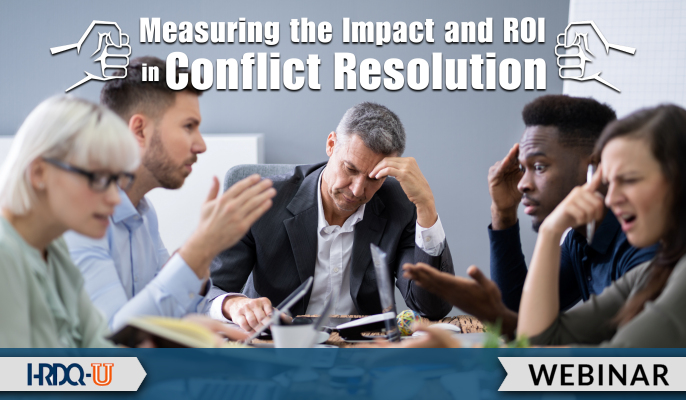Why ROI?
There are good reasons why return on investment has gained acceptance globally. Although the viewpoints and explanations may vary, some things are apparent.
Budget Allocation. A growing budget creates a larger target for internal critics, often prompting the need to measure ROI. The function, department, or process demonstrating the most value will likely receive the most significant budget increase.
Familiarity. The business management mindset of many current managers causes them to emphasize economic issues within the function. Today’s CLO is more aware of bottomline issues in the organization and more knowledgeable of operational and financial concerns. This new “enlightened” manager often takes a business approach to learning and development, with ROI as part of the strategy. ROI is a familiar term and concept for these managers, particularly business administration and management degrees. They have studied ROI in their academic preparation and used ROI for evaluation. Consequently, these managers understand and appreciate ROI and are pleased to see the ROI Methodology applied to the organizational initiatives.
Accountability. There has been an increased demand for accountability in organizations globally. Every support function attempts to show its worth by capturing the value it adds to the organization. From the accountability perspective, the learning and development function should be no different from other functions – it must show its contribution to the organization.
Top Executive Requirement. C-suite executives have taken an increased interest in ROI. These leaders have watched their budgets grow – often without the appropriate accountability measures in place. In response, they have looked to ROI. Top executives now demand return on investment calculations from departments and functions where they may not have been previously required.
Barriers to ROI Implementation
Although some progress has been made in implementing ROI, significant barriers inhibit the implementation of the concept. Some of these barriers are realistic, while others are myths based on false perceptions. Each barrier is briefly described in the following section.
Costs and Time. The ROI Methodology adds additional costs and time to the evaluation process of programs, although the added amount is not excessive. A comprehensive ROI process can be implemented for 3-5% of the overall training budget. This barrier alone often stops many ROI implementations early in the process. The additional ROI investment could be offset by the other results achieved from these programs and the elimination of unproductive or unprofitable programs.
Lack of Skills and Orientation. Many team members neither understand ROI nor have the basic skills necessary to apply the process within their scope of responsibilities. Measurement and evaluation are not usually part of the preparation for most jobs. Team members attempt to measure results by measuring learning. Consequently, a tremendous barrier to implementation is the change needed for the entire team’s overall orientation, attitude, and skills.
Faulty Needs Assessment. Many current programs do not have an adequate needs assessment performed. Some programs have been implemented for the wrong reasons based on management requests or efforts to chase a popular fad or industry trend. If the program is not needed, the benefits from the program will be minimal. An ROI calculation for an unnecessary program will likely yield a negative value. This is a natural barrier for many programs.
Fear. Some departments do not pursue ROI because of fear of failure or fear of the unknown. Fear of failure appears in many ways. Designers, developers, facilitators, and program owners may be concerned about the consequence of negative ROI. They fear that ROI will be a performance evaluation tool instead of a process improvement tool. Also, the ROI process will stir up the traditional fear of change. This fear, often based on unrealistic assumptions and a lack of knowledge of the process, becomes a real barrier to many ROI implementations.
Discipline and Planning. A successful ROI implementation requires much planning and a disciplined approach to keep the process on track. Implementation schedules, evaluation targets, ROI analysis plans, measurement and evaluation policies, and follow-up schedules are required. The learning team may not have enough discipline and determination to stay on course. This becomes a barrier, mainly when there are no immediate pressures to measure the return. If the current senior management group is not requiring ROI, the learning team may not allocate time for planning and coordination. Also, other pressures and priorities often eat into the time necessary for ROI implementation. Only carefully planned implementation will be successful.
False Assumptions. Many team members have faulty assumptions about the ROI process, which keep them from attempting ROI. Typical of these assumptions are the following:
- The impact of learning cannot be accurately calculated. Operating managers do not want to see the results of learning and development expressed in monetary values. If the CEO does not ask for the ROI, they are not expecting it.
- “I have a professional, competent staff. Therefore, I do not have to justify the effectiveness of our programs.”
- Learning is a complex but necessary activity. Therefore, it should not be subjected to an accountability process.
- These false assumptions form natural barriers that impede the progress of ROI implementation.
Benefits of ROI
Although the benefits of implementing the ROI Methodology may appear obvious, several distinct and significant benefits can be realized.
Measure Contribution. The ROI Methodology is the most accurate, credible, and widely used process to show the impact of learning. The learning team will know the specific contribution from a select number of programs. An ROI study will determine if the program’s benefits, expressed in monetary values, have outweighed the costs. It will determine if the program contributed to the organization.
Establish Priorities. Calculating ROI in different areas will determine which programs contribute the most to the organization, allowing priorities to be established for high-impact learning. Successful programs can be expanded into other areas – if the same need is there–ahead of other programs. Inefficient programs can be designed and redeployed. Ineffective programs may be discontinued.
Focus on Results. The ROI Methodology is a results-based process that brings a focus on results with all programs, even for those not targeted for an ROI calculation. The process requires instructional designers, facilitators, participants, and support groups to concentrate on measurable objectives: what the program is attempting to accomplish. Thus, this process has the added benefit of improving the effectiveness of all learning and development programs.
Earn Respect from Senior Executives and Sponsors. Developing the ROI information is one of the best ways to earn the respect of the senior management team and the sponsor (the person who cares about the program). Senior executives have a never-ending desire to see ROI. They will appreciate the efforts to connect training to business impact and show the actual monetary value. It makes them feel comfortable with the process and makes their decisions much more effortless. Sponsors who often support, approve, or initiate programs see the ROI as a breath of fresh air. They see the value of the learning in terms they understand and appreciate.
These key benefits, inherent with almost any impact evaluation process, make the ROI process an attractive solution.
While there is almost universal agreement that more attention is needed on ROI, it is promising to note the tremendous success of ROI. Its use is expanding. Its payoff is enormous. The process is not very difficult or impossible. The approaches, strategies, and techniques are not overly complex and can be helpful in a variety of settings. Practitioners’ and researchers’ combined and persistent efforts will continue to refine the techniques and create successful applications.
















